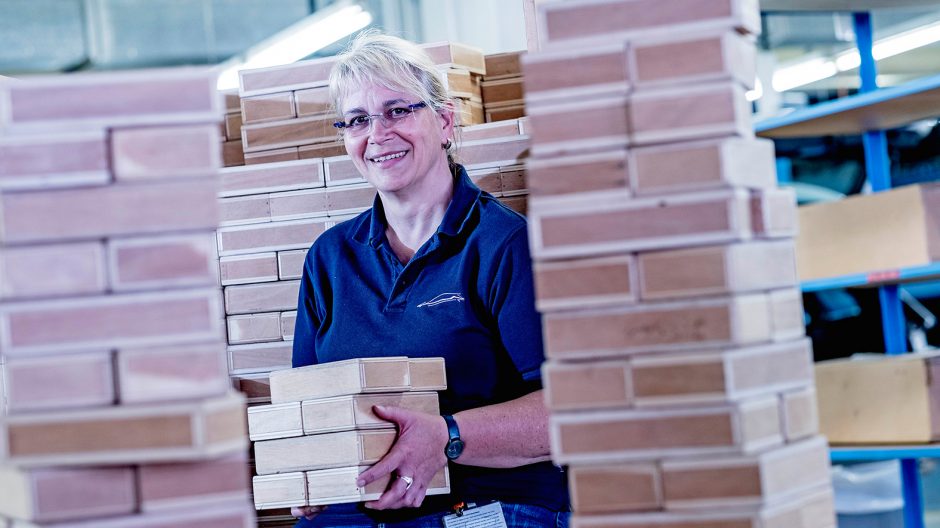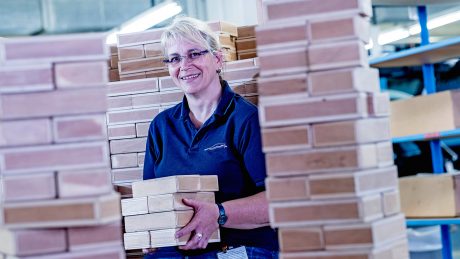––––––
“The Insignia Sports Tourer has a competitive trunk volume, and a unique design that immediately catches your eye.”
––––––
Silke Öhlmann keeps the most important tool for her work on a shelf behind her desk. It’s a wooden block, roughly the size of a milk carton. But ‘roughly’ doesn’t quite cut it here. She uses these blocks to determine maximum load volumes. “That’s the reason why the size of these blocks has been standardized,” she explains. She has held the position of Subject Matter Expert Trunk/Cargo in the Architecture & Vehicle Configuration Department for six years, and determines the storage capacities of Opel models. This is called ‘taking volumetric measurements’ in technical jargon.
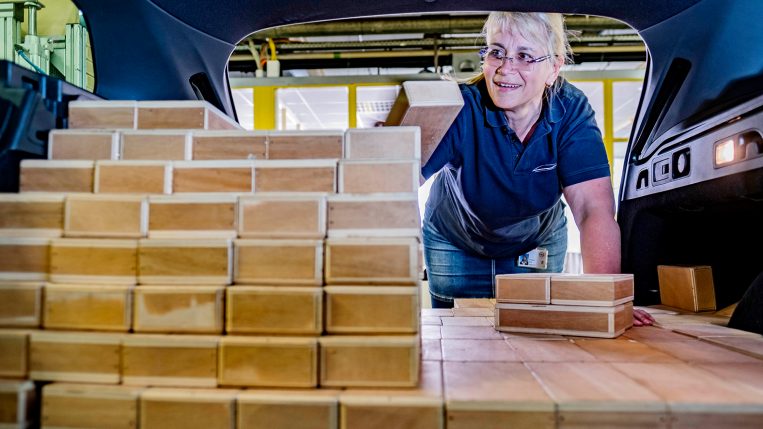
Blocking out the space: Öhlmann arranges the measuring blocks in the cargo hold of the Insignia Sports Tourer, while trying to save as much space as possible.

More in it than meets the eye: The cargo hold of the Opel flagship can accommodate an impressive 1,665 liters.
But she fell into the job by chance. Trained as a cartographic engineer, upon rejoining the workforce after taking maternity leave, she decided to start working at an engineering firm that cooperated almost exclusively with Opel. “My original profession had nothing to do with cars. But it required technical drawing and spatial thinking, and that’s how I gradually expanded into the automotive industry.” Now, instead of landscape maps, Öhlmann works on Opel’s topography by visualizing the figurative valleys and mountains of its models’ interiors.
From reference values to target values
“However, the physical volumetric measurements are the last step at the end of a long process,” explains Öhlmann, whose work always begins in parallel to the development of a new car. “After it was decided that the Insignia would be available as a station wagon, our first step was to get our initial reference value by researching cargo holds in other vehicles in that segment as well as the volume of its predecessor.”
Öhlmann also incorporated ideas from Opel designers and engineers in her initial calculations. “We wanted to find the perfect ratio between design, cargo hold volume, and utility with the Insignia Sports Tourer,” she says, explaining the complex balancing act involved in designing the Opel flagship vehicle. “We found a more precise value by consulting employees from Marketing. And we were able to commit to a final target value later on when we had the first design drafts.”
From calculations on the computer,
to „real-life tetris“
While her fellow workers further developed the station wagon version of the Opel flagship vehicle, Öhlmann always kept a firm eye on the target value. She listened to the engineers’ ideas, evaluated the designers’ plans, and vetoed them if they had the potential to jeopardize the set goal.
Three years passed before she could begin taking volumetric measurements for the Insignia prototype. Up to that point, Öhlmann had only made calculations using computer software. “As soon as suitable prototypes are available, they are filled with as many measuring blocks as possible. It’s like playing Tetris with wooden blocks.”
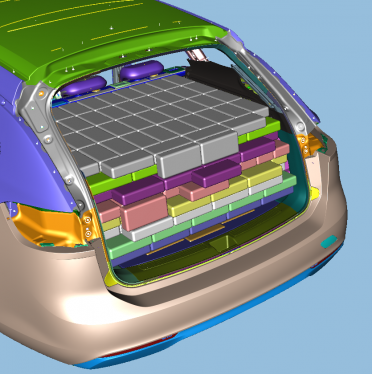
Virtual loading in the CAD system plays just as important a role in volumetric measurement as measuring a real car does, especially before the first prototype is made.
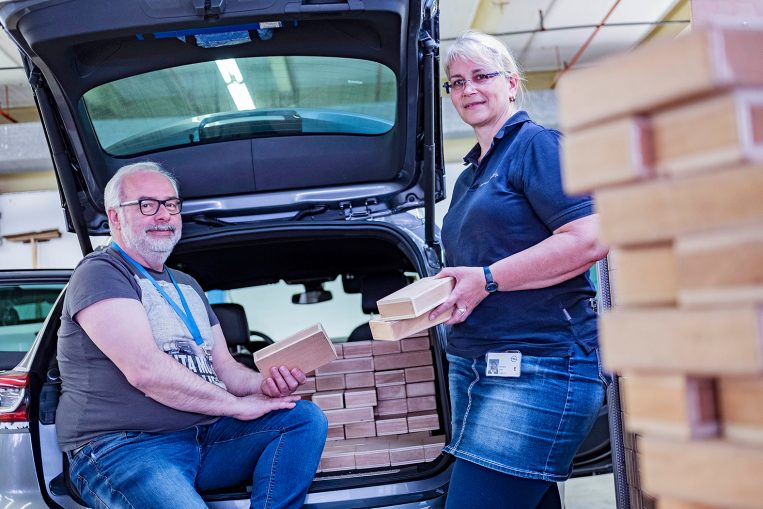
Teamwork: Group Leader Arno Lang coordinates fellow workers in the workshop while carrying out the volumetric measurement test designed by Silke Öhlmann.

“Tetris with wooden blocks”: Each standardized block representing one liter has to be placed carefully.
––––––
Trunk volume in catalogues is specified in liters according to the ISO 3832 and DIN 70020 standards. These standards exclusively permit the use of standard measuring blocks – with a volume of one, four, or eight liters and precisely defined edge lengths and radii – as a means of measurement. The maximum possible number of these kind of blocks that can be placed in the cargo space without being deformed equals the storage capacity.
––––––
About ten months before series production for the Sports Tourer began, it was time to play ‘Tetris.’ Two employees from the workshop in K 40 stacked the wooden blocks just like in the classic computer game, until they reached the roof of the almost five-meter long prototype.
The German Association of the Automotive Industry stipulates a uniform measuring method with clearly defined rules, so that specifications are comparable and standardized: Only standardized measuring blocks can be used to fill the cargo hold, the smallest amount one liter in volume, with minimum edge lengths of 200 x 100 x 50 millimeters and a maximum edge radius of ten millimeters.
Two employees – Two rounds
“The Insignia Sports Tourer, just like every other vehicle, underwent two rounds” explains Arno Lang, Group Leader, who coordinates four fellow workers in carrying out physical volumetric measurements of Opel models. “It starts off with one person passing the blocks, and the other one placing them. Then they swap. Since every employee has a different approach to placing the blocks, an offset of a few millimeters can mean a difference of several liters.”
And because the position of every single block has to be carefully thought out beforehand, it takes about eight hours to fill the Insignia Sports Tourer with blocks and empty it out again.
Only entire blocks count
There are also certain rules for loading the model, as Öhlmann explains: “Anywhere behind the front seat is considered cargo space. The seats must be put into the so-called ‘design position.’ They must be positioned at a slight angle, and not too far forward. Along with the trunk, we are allowed to fill all compartments and storage spaces that you can open without having to use a tool.” That’s why even spaces under the cargo hold floor, where the spare tires are normally stored, were factored into the Opel flagship’s calculation. “But we only count entire wooden blocks, of course. We can’t use other units.”
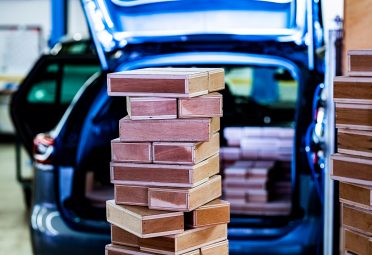
The Tower of Opel: The one-liter measurement blocks are stacked to the roof of the Insignia Sports Tourer.

Fully loaded: Wooden blocks stacked up behind the front seats of the Insignia Sports Tourer at the end of the volumetric measurement.
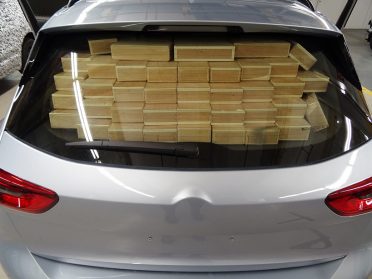
(B)locked and loaded: The wooden blocks are piled up until they reach the roof of the flagship prototype.
After carrying out the physical volumetric measurements, Öhlmann compared the results with the calculations from the computer software, and determined an average value of 1,665 liters. She sent this to her fellow workers in Marketing, who then updated the value in their price lists and sales brochures.
„We’ve reached our goal“
“As a general rule, I only work on a model again when it needs a facelift,” says Öhlmann, who is delighted with the Insignia result. “All things considered, we’ve reached our goal of creating a Sports Tourer that has a competitive trunk volume, and a unique design that immediately catches your eye.”
Öhlmann has long since reached the next level in her game of ‘Tetris with wooden blocks.’ Just like if she were playing this puzzled-based video game, she always thinks a few steps ahead, and is already preparing the Opel models of tomorrow for their volumetric measurements.
April 2018
